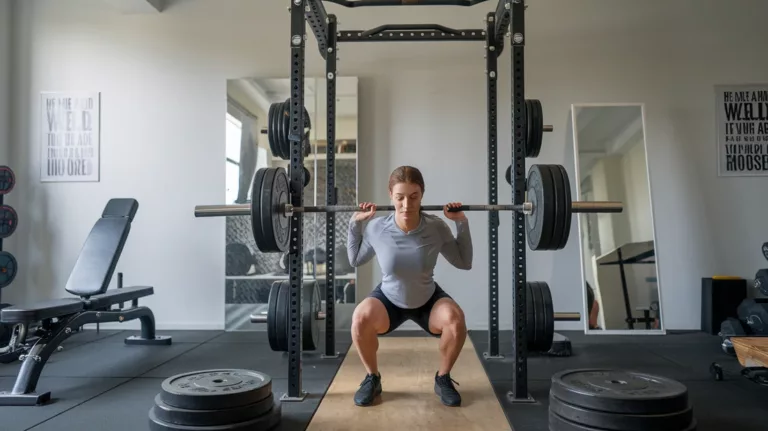Strength training is fantastic for building muscle, burning calories, and sculpting your physique.
But to truly optimize your fitness journey, consider adding cardio to your routine.
This powerful combination unlocks a treasure trove of benefits, from boosting heart health to accelerating weight loss.

This blog dives deep into incorporating cardio with strength training, providing a roadmap for a well-rounded workout program.
Get ready to learn about the advantages, explore different cardio options through a table, and discover strategies for scheduling and planning your workouts.
Key Takeaways:
- Combining cardio and strength training offers a multitude of benefits for overall health and fitness.
- Different types of cardio cater to various goals and preferences.
- Strategic scheduling maximizes the effectiveness of both cardio and strength training.
Why Marry Cardio and Strength Training?
Think of cardio and strength training as a dynamic duo in the fitness world:
- Enhanced Cardiovascular Health: Cardio strengthens your heart and lungs, improving circulation and boosting your body’s ability to use oxygen. This translates to better endurance, allowing you to push harder during workouts and in daily life.
- Fat-Burning Powerhouse: Combining these exercises maximizes calorie burning. Strength training builds muscle, which burns more calories at rest. Cardio utilizes those extra calories for energy, leading to accelerated weight loss or maintenance.
- Muscle Preservation: Contrary to a common misconception, cardio doesn’t have to eat away at your hard-earned muscle. Opting for high-intensity interval training (HIIT) or moderate-intensity cardio in shorter bursts helps preserve muscle mass.
- Improved Overall Fitness: This combo strengthens your cardiovascular system, builds muscle, and enhances coordination and agility. You’ll not only look good, but you’ll feel fantastic!
Finding Your Cardio Groove (Table)
Not all cardio is created equal.
Explore the table below to find your perfect match based on your goals and preferences.
This visual guide highlights popular cardio options like HIIT, LISS, bodyweight exercises, and low-impact activities.
| Goal | Cardio Type | Examples | Benefits |
|---|---|---|---|
| Burn maximum calories | High-Intensity Interval Training (HIIT) | Sprints, jump rope, burpees | Burns significant calories in a shorter time, boosts metabolism |
| Improve cardiovascular health | Low-Intensity Steady State (LISS) | Brisk walking, jogging, swimming | Excellent for recovery days, promotes fat burning, improves overall heart health |
| Convenient, no-equipment workout | Bodyweight Cardio | Jumping jacks, lunges, squats | Easy to do anywhere, great for beginners |
| Gentle on joints | Low-Impact Cardio | Swimming, elliptical training, cycling | Minimizes impact, ideal for beginners or those with injuries |
Remember, the best cardio is the one you enjoy and can stick with consistently!
Scheduling and Planning: Your Personalized Approach
Now, let’s talk about integrating cardio into your strength training routine. Here are some key strategies:
- Strength Training First: Prioritize strength training when your energy levels are highest. You’ll be able to lift heavier weights with better form.
- Separate Days or Combined Sessions: Consider separate days for each or combine them in the same session depending on your fitness level and goals. Beginners might benefit from separate days, while experienced athletes can combine them effectively.
- Active Rest: Don’t waste rest periods between strength training sets. Utilize them for light cardio, like jumping jacks or jumping rope, to keep your heart rate up and burn extra calories.
- Listen to Your Body: Schedule rest days to allow your body to recover properly. Aim for a balanced approach, prioritizing both cardio and strength training in your program.
Warm-up and Cool-down: Don’t forget the importance of proper warm-up and cool-down routines to prevent injuries and improve recovery. For detailed explanations on these routines, check out trusted resources like [link to reliable warm-up/cool-down guide].
- Tracking Progress: Monitor your progress to stay motivated and adjust your workout plan as needed. Track aspects like weights lifted, reps achieved, and cardio times/distances.
Conclusion

Incorporating cardio into your strength training routine elevates your fitness game to a whole new level.
By understanding the benefits, exploring diverse cardio options, and strategically planning your workouts, you’ll unlock a treasure trove of results, from a stronger heart to a sculpted physique.
Remember, consistency is key!
So, lace up your shoes, hit the gym (or your living room!), and get ready to experience the transformative power of this dynamic fitness duo.
Ready to take the next step? Consult a certified personal trainer for a personalized plan tailored to your specific goals and fitness level.
They can help you create a balanced and effective workout program that incorporates both cardio and strength training.
Related Posts



